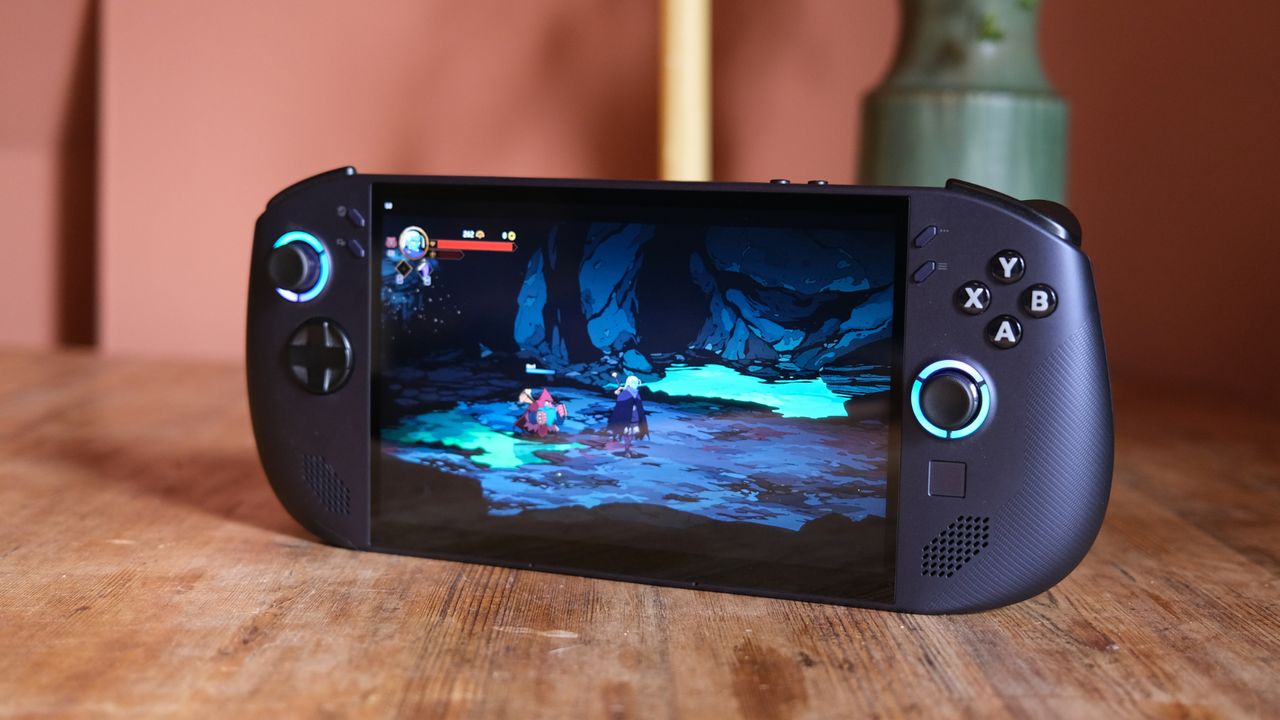
The Steam Deck's rise to glory has been something to behold – it's not that often that you watch a device clearly and undeniably kick off an entire new part of the market like Valve's did upon its release.
Now, years later, there are more PC gaming handhelds than you can throw a stick at, but most are only indirect competition thanks to high prices and different operating systems.
Lenovo, however, has done something different with this particular Legion Go S: it's embraced Valve's domination and used SteamOS, abandoning Windows to make a direct Steam Deck competitor with some potentially telling upgrades, for a higher price.
How does that work out? I've been gaming with it all week and, spoiler alert, can confirm that Lenovo now makes the best portable Steam handheld.
Price and availability
The Legion Go S (SteamOS) has now been out for a good few months, which means that any shortages have eased, and you should be able to find it in plenty of places and from a range of retailers. That's the case in the UK, at least – in the US, things seem scarcer.
The device starts from £699 in the UK, €649 in Europe, $830 in the US, and AU$1329 in Australia – which is a good chunk more expensive than the non-SteamOS versions of the Legion Go S, which you can find on the market.
Design and features
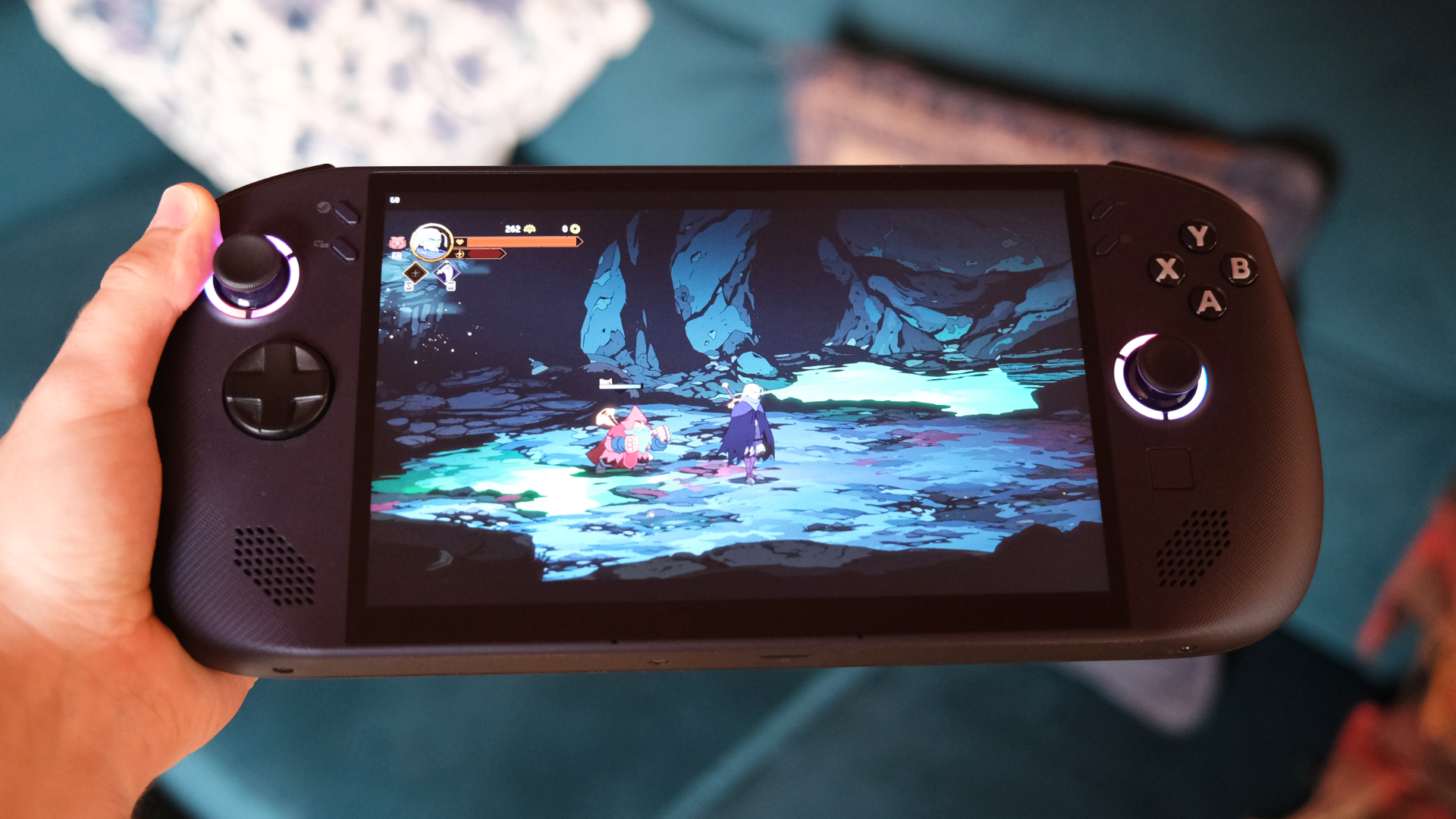
Before we get to its interesting set of features, it's worth saying that I think the Lenovo Legion Go S (SteamOS) is just about the best PC gaming handheld I've tested from an ergonomic standpoint. That might be damning it with faint praise, admittedly – too many of these beastly handhelds are heavy and clunky.
The Legion Go S (which feels the same to hold in all versions) smooths out the edges to make itself look smaller and slinkier, while actually still remaining substantially heavier and thicker than a Switch 2, for instance. By embracing curves, though, it ends up being nice and rounded with integrated grips that just feel good (in my hands, at least).
It's also not so wide as to be ungainly, and I actually think it one-ups the Steam Deck on this front. On the front of the console, you get the standard twin sticks, a D-pad, a fingerprint reader for security, and the four menu and function buttons familiar to SteamOS users.
There are shoulder buttons and triggers on the top, and on the back of the console, there are two extra grip buttons where your fingers rest while holding it. Best of all, you also get switches to swap the triggers between full travel and a clicky mode, which is a really nice feature to get thrown in, normally reserved for separate pro controllers.
The top of the consoles houses two USB-C ports (so you can dock and charge at the same time), a 3.5mm audio port, volume buttons and the power button. The bottom has a single slot for microSD card expansion.

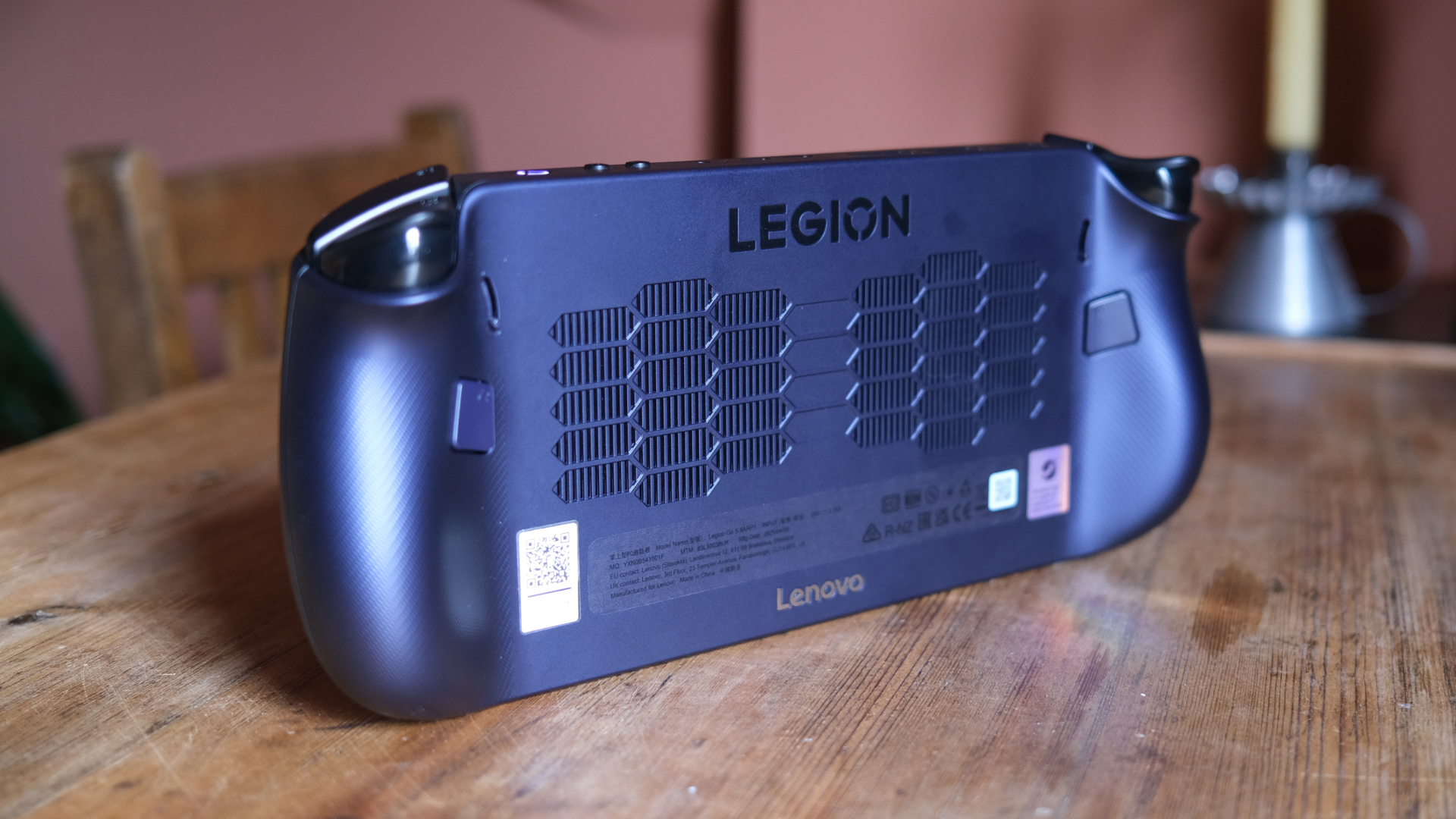
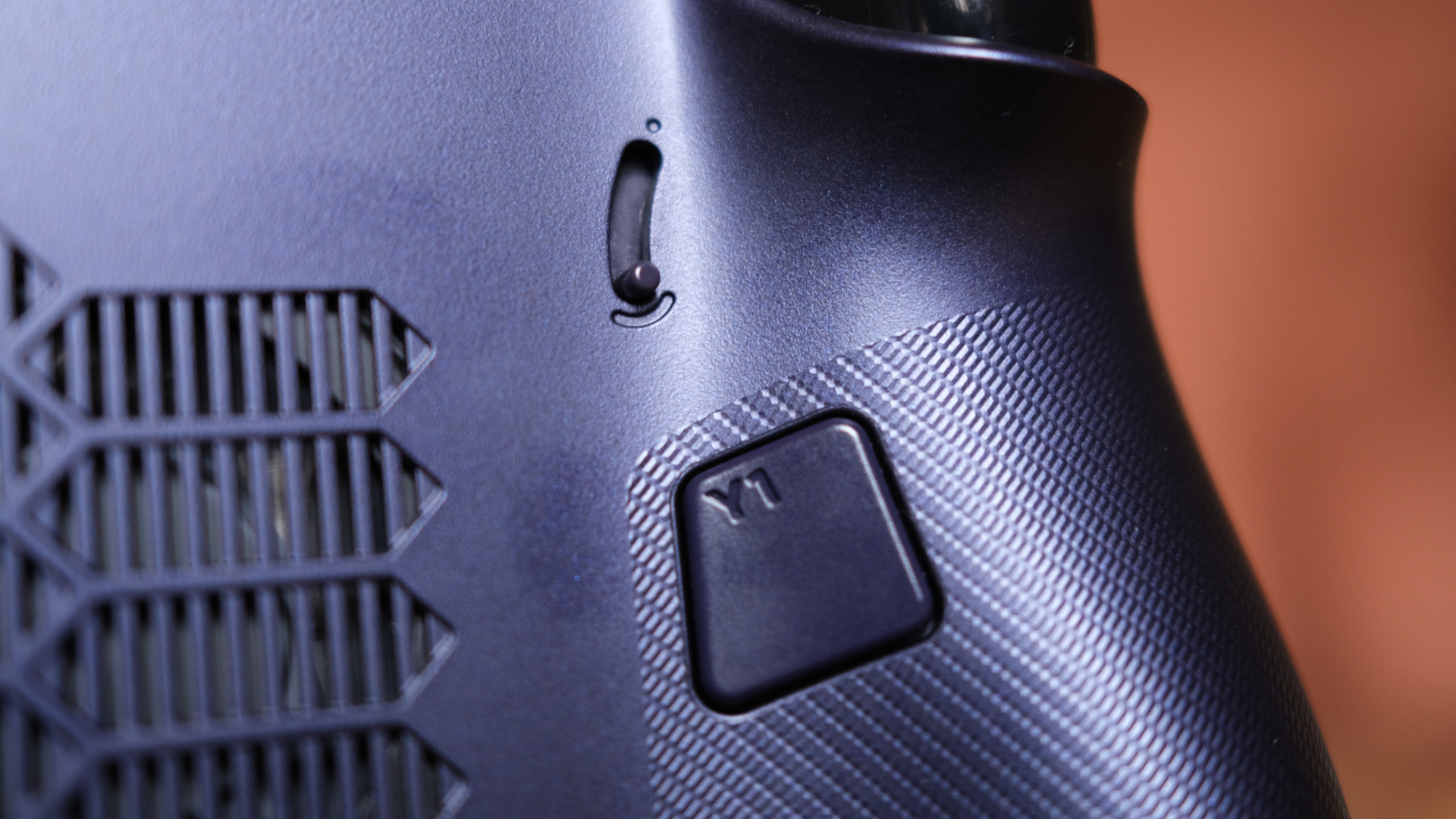
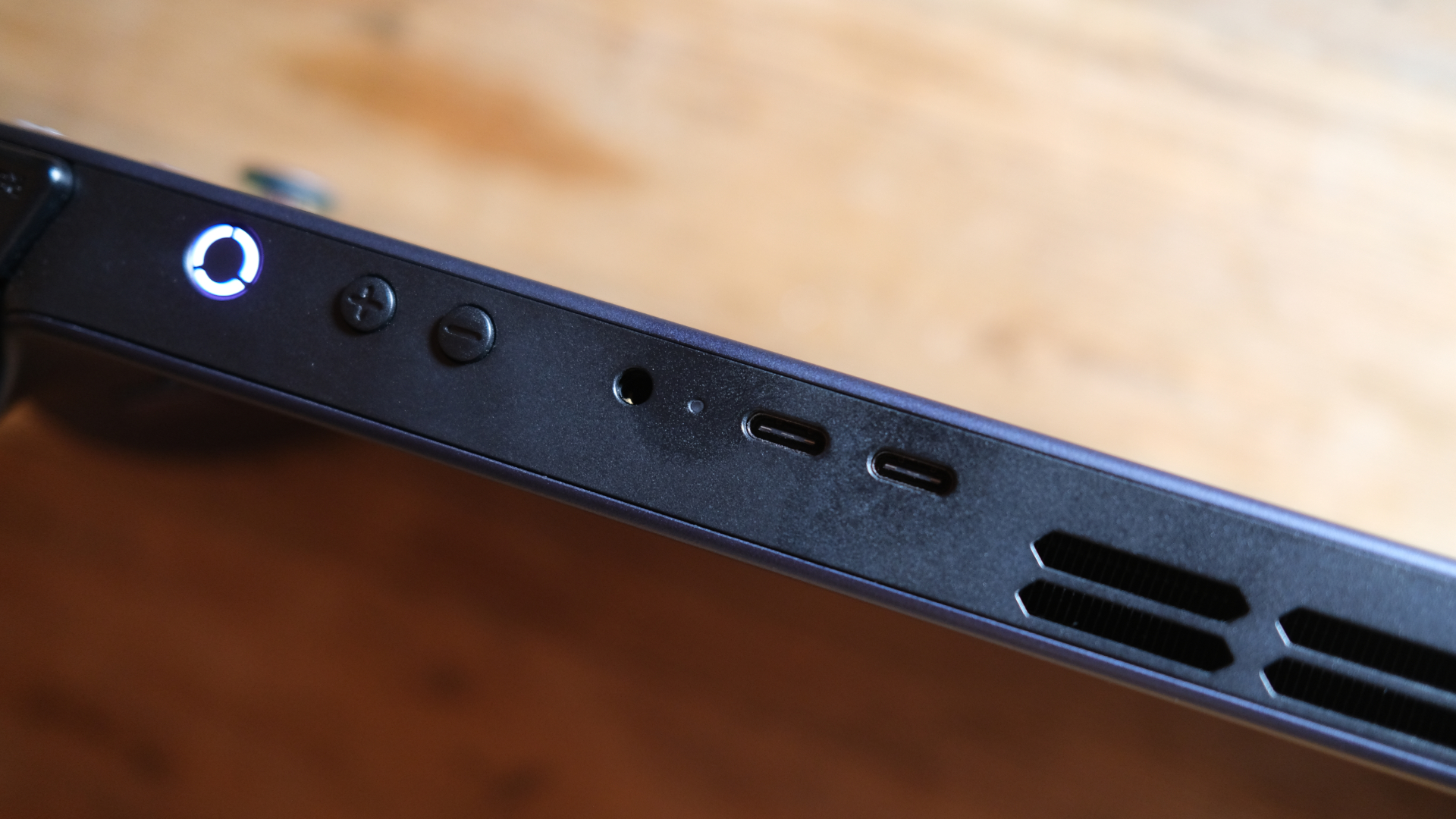
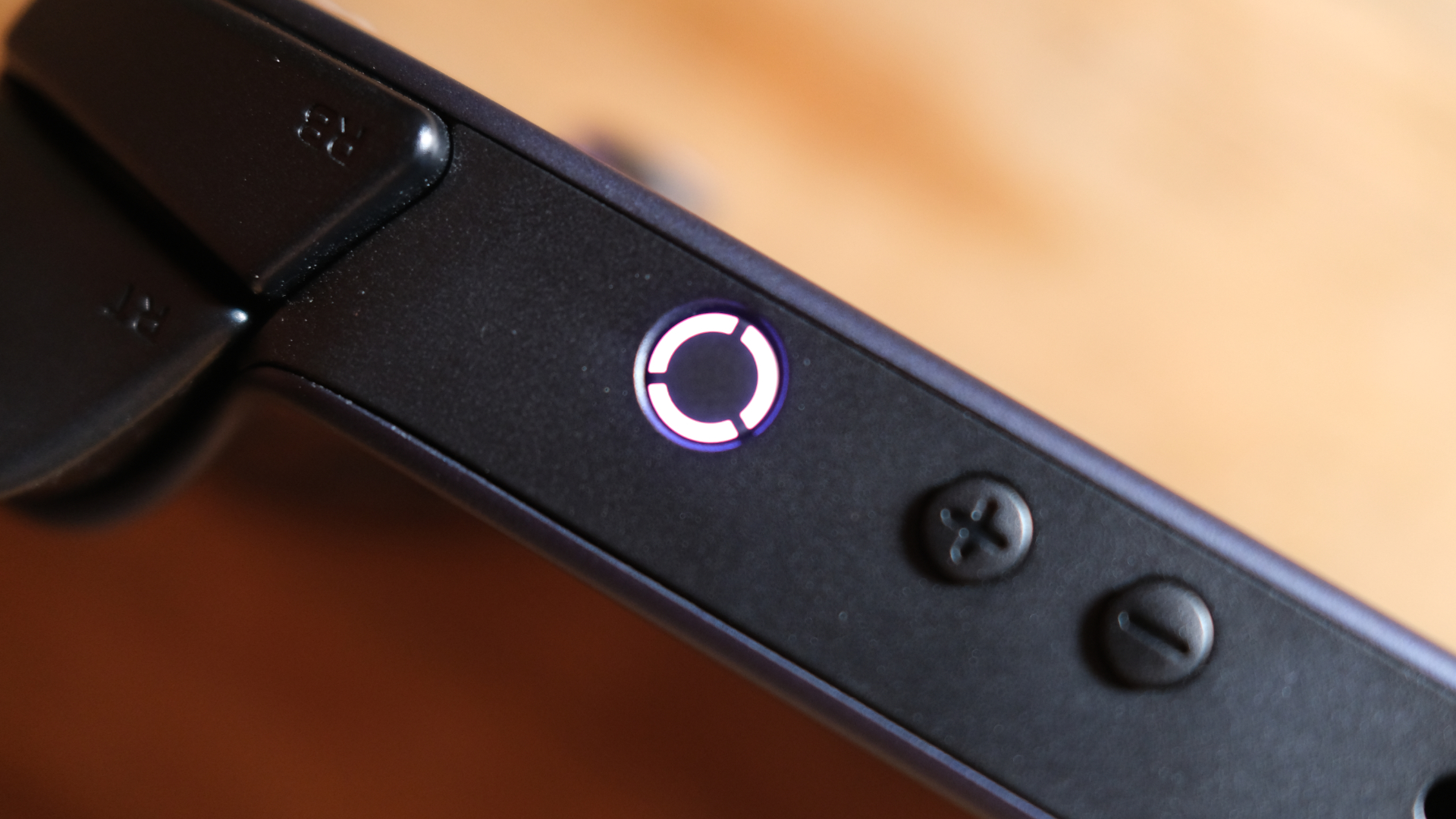
This makes the handheld simpler than plenty of other competitors and, crucially, I found it comfortable for hours at a time. I also think it looks great – the lights around the sticks and power button give it a nice sense of identity, while the overall finish is classy. The handheld has a satin plastic finish in a sort of dark grey that verges on purple, and I really like it.
All of this surrounds its 8-inch WUXGA IPS LCD display, which runs at up to 120Hz and 1920 x 1200 resolution. Crucially, it doesn't have massive bezels, particularly to the left and right, which again makes the console's design feel well-considered and laid out.
For cooling, there are large intake areas on the back of the console, and one set of serious exhaust fans atop it. On the front of the handheld, meanwhile, are the small speaker grilles for audio output.
The key change that Lenovo has made to the normal Legion Go S is, of course, the move to SteamOS – and that brings with it the extremely usable interface that works so well on the Steam Deck. So long as you've got a collection of games on Steam, it's a dream to use, and it really does feel so slick to navigate through.
It's also underpinned by the AMD Ryzen Z1 Extreme processor, which has the power to ensure that you're not limited to indie hits and low-fi gaming. It also boasts 32 GB of LPDDR5X RAM, a 1TB SSD for storage, and a 55.5 Wh battery to round things out. This makes it a powerful option, albeit not quite the most powerful handheld around now that the likes of the ROG Xbox Ally X have the newer Ryzen Z2 Extreme.
Performance and Display
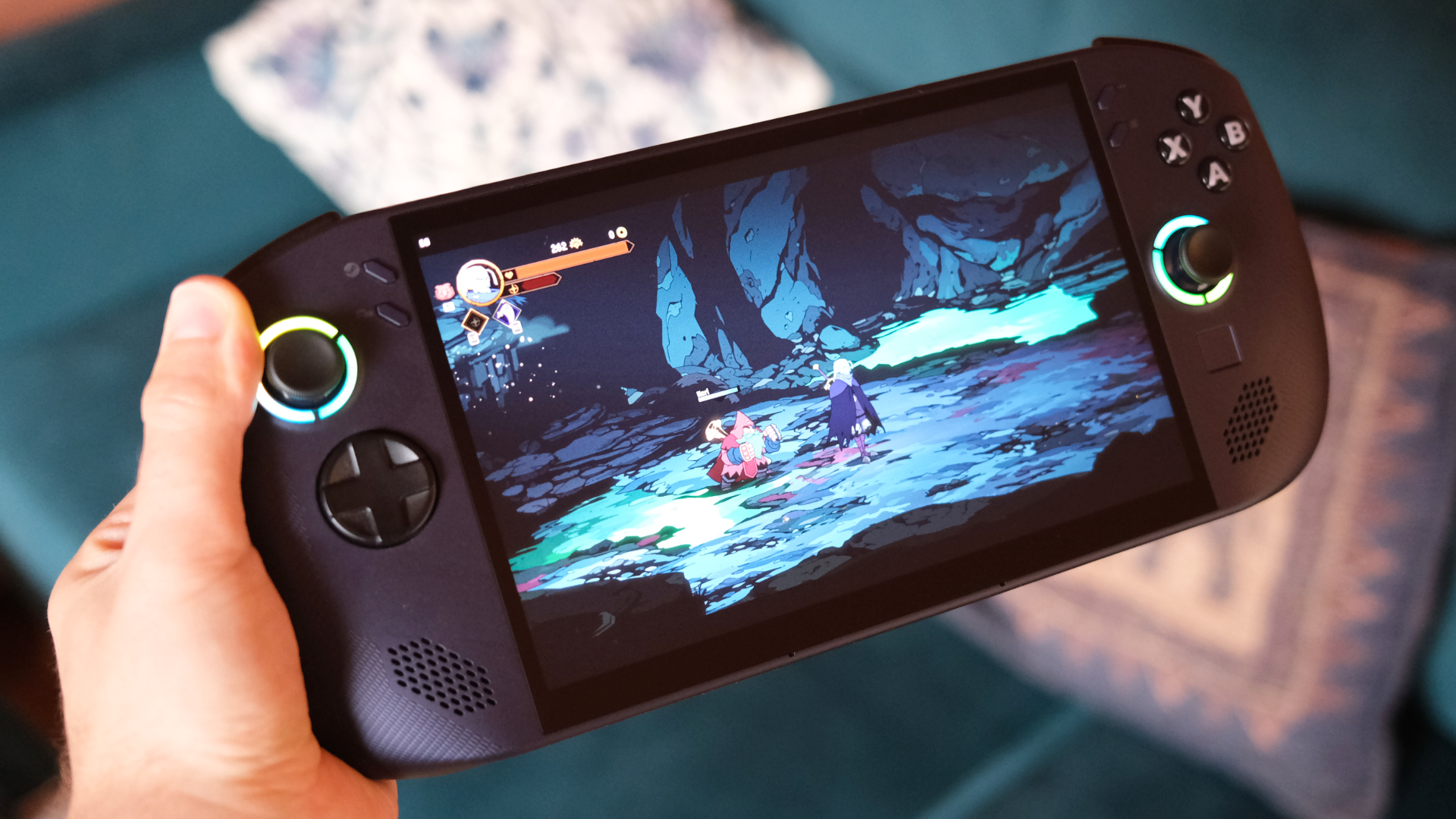
The simplicity of booting up a game in SteamOS can't really be matched by the various Windows machines out there right now, but a decent amount of testing from more dedicated PC gaming channels than myself have also indicated that Valve's Linux-based OS has actual performance benefits while gaming, too.
That's hard to quantify when you're just testing the one machine, but however you slice it, I've been impressed with what the Lenovo Legion Go S manages when you game on it. I started it with a tough cookie – Doom: The Dark Ages, a modern release that uses bleeding-edge features, but does have a "Handheld" preset courtesy of its development team.
Using that preset, the game can run really quite smoothly at a native 1080p – with nothing tweaked at all, I was getting a steady and playable 30fps. Bumping up its FidelityFX Super Resolution (FSR) usage to get more frames, meanwhile, got this to more like 45fps without any trouble, with the inclusion of variable refresh rate (VRR) support ensuring the display made dips almost invisible.
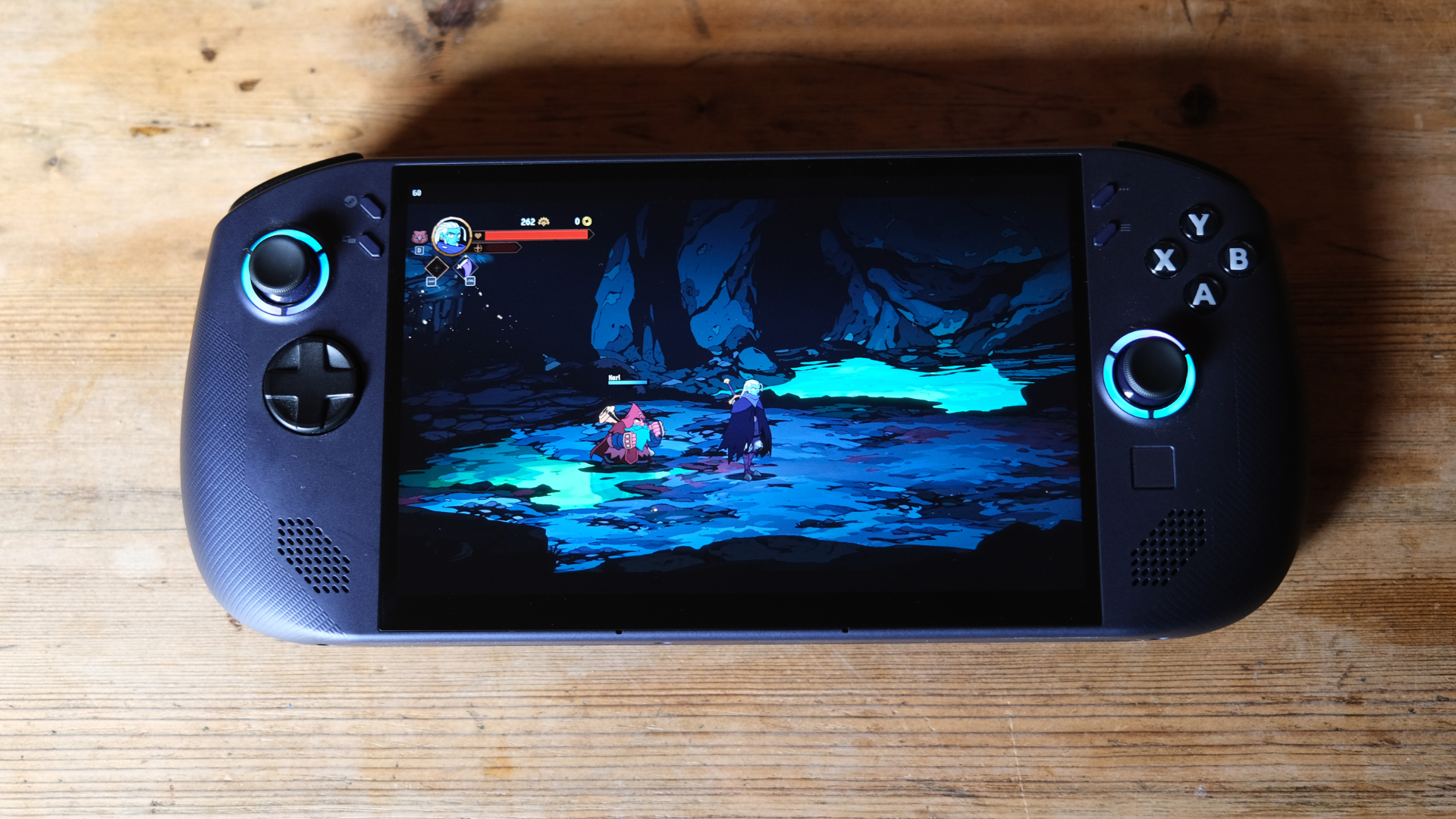
Of course, the real name of the game on this front is often dropping the resolution down – 1080p on an 8-inch screen is frequently unnecessary, and I found I could happily play at 720p for a further performance uplift. Does The Dark Ages shine visually this way? Not really, no, but it proves the device's capabilities.
Swapping over to a more handheld-friendly title, the recent roguelike beat-em-up Absolum, and the Legion Go S was able to demonstrate its worth more easily. The game holds an absolutely locked 60fps and looks delightful on that IPS panel.
Much like the Switch 2's screen, it's a shame this isn't an OLED here, but that doesn't stop it from being an excellent LCD display, one with good brightness and nice, vivid colours. Even on a game that demands a bit less from the hardware, though, you'll find you need headphones to really get immersed – the fans on this SteamOS version Legion Go S get loud pretty much regardless of what you're playing.
Battery life is similarly variable depending on what you're playing. I found it ranged anywhere from 90 minutes to a bit more than 3 hours, depending on power levels, brightness and graphical intensity. Either way, having a good power bank handy will never be a bad idea.
You can basically expect clearly superior performance on the Legion G S (SteamOS) compared to a Steam Deck, despite the two devices feeling nigh-on-identical thanks to having the same operating system. That said, whether it's worth the uplift, given you can find Steam Decks for around half the price if you go looking, is up to you.
Verdict

I've been hugely impressed by the SteamOS version of Lenovo's Legion Go S. It feels like the PC gaming handheld I'd most like to keep using out of those I've tried, and that's largely down to the pairing of Steam's super-usable handheld OS with a good amount of power under the hood. It still can't handle the most bleeding-edge graphics, but for handheld-optimised games it's a beauty.
That said, there's no escaping the fact that it's priced at a luxury level, albeit I think it looks really favourable compared to competition from the likes of Asus and MSI. If you want Steam convenience on the go and have the budget, the SteamOS Legion Go S is a doozy of a gaming machine.
Also consider
The obvious alternative to Lenovo's Steam machine here is the original number – Valve's Steam Deck, preferably in its OLED version. That OLED version is only a bit cheaper than Lenovo's, but while you get a richer display, it's weaker internally, so the used market might hold even more value.
If you want the full Windows experience, though, to unlock even more gaming options, then perhaps the new Asus ROG Xbox Ally X could be the upgraded option at an even higher price. It has a newer, more powerful chip, and lets you install whatever you want.







